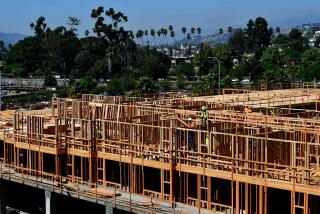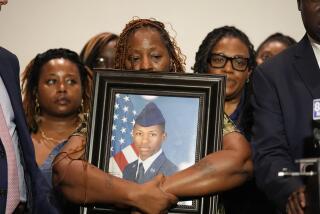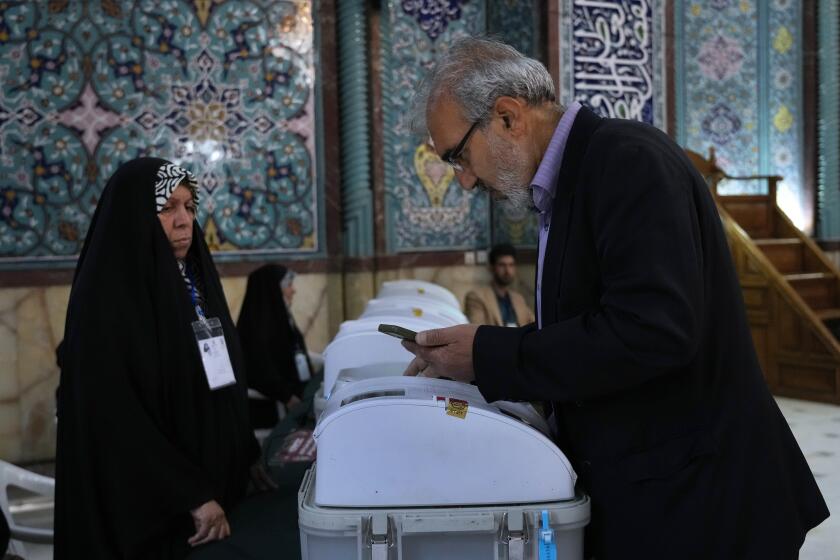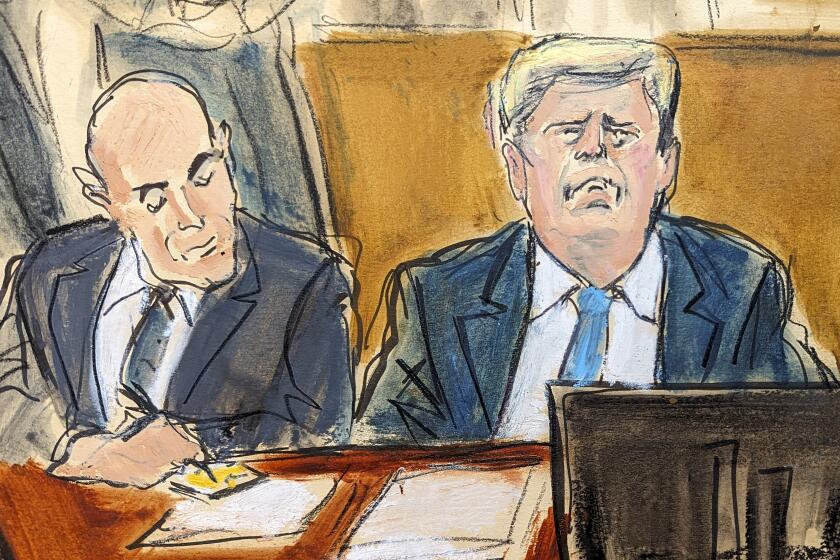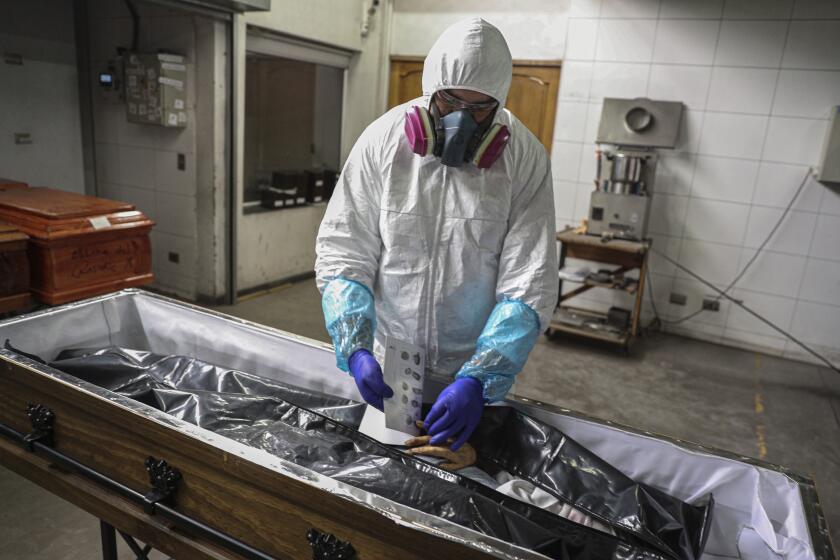Panama Again Seen as a Hub of Drug Traffic
Just 16 months after American troops invaded Panama to free it from the domination of cocaine lords, it has again been turned into a narcotics center by Colombian drug cartels and associates of ousted dictator Manuel A. Noriega, say U.S. and Panamanian military, police and government officials.
Although specifics are scarce, these sources say that a lack of government resources, experience and any effective program have allowed the level of narcotics trading, nearly all of it controlled by the so-called Medellin cartel of Colombia, to equal--and in some cases to exceed--what went on in the year before Noriega was arrested two weeks after the Dec. 20, 1989, U.S. invasion.
“The cartels have privatized the drug trade,” one diplomat said. “They have taken it out of government control and put it in the free market, and it’s doing better than ever.”
Defenders of the government and U.S. policy here play down such allegations, saying that the drug trade in 1989 was conducted at a very low level because of economic sanctions and interdiction programs imposed by the United States.
“So,” argues Panamanian Second Vice President Guillermo (Billy) Ford, “to say that the current level matches 1989 doesn’t mean very much.”
However, officials of the drug-control effort say that the trend is sharply upward and includes serious movements by the Colombian cartels into areas largely ignored under Noriega.
For instance, there are far more cocaine production facilities in Panama now than ever existed under Noriega; drug use in the country itself is at a far higher level, according to police and military personnel.
One U.S. military source said there are at least eight cocaine production plants in the jungle of Darien province that borders Colombia. Other Panamanian police sources say the number could be as high as 20.
At the height of Noriega’s rule, the Colombian drug bosses were unable to maintain production laboratories in Panama, since the dictator limited their activity to shipping drugs through the country and laundering profits in Panamanian banks. That has all changed, sources say.
“It has gotten so bad that there is even a small cocaine lab in Patilla,” said one American source, referring to the Panama City neighborhood favored by rich foreigners.
At the same time, the use of Panama as a way station for the shipment of drugs to North America and Europe has sharply increased in recent months, the sources say, and is measured in tons and valued in the hundreds of millions of dollars.
“If transshipment is at the same level as 1989, you can bet that by this time next year it will be double or triple or even more. These guys (in the drug cartels) don’t sit still, particularly when they see how easy it is here,” one American source said.
This assessment was borne out by a U.S. Embassy official who otherwise is reluctant to accept the dire reports of drug enforcement agents: “My feeling is that the traffickers (at first) laid back . . . then saw what the situation is like . . . that Panama is not capable of controlling its borders.”
Drug enforcement agents say that, except for a relatively effective control program at Panama City’s Tocumen International Airport, traffickers move their goods freely into and out of the country. A favorite route runs from Darien province to the Pearl Islands in the Gulf of Panama and thence to Panama City and Colon at either end of the Panama Canal.
The traffickers feel so confident, one agent said, that their ships often dock at Panama City’s municipal fishing wharf, where they can been seen tying up next to the antique converted shrimp boats that the police use for interdiction.
The laundering of drug profits through Panamanian banks and front companies was the major focus of the narcotics bosses during the military rule and included even the country’s government bank.
Money laundering by Panamanian banks has all but stopped, most sources agree, and is unlikely to resume at any meaningful level because of a new treaty that allows American authorities to prosecute anyone depositing illegal drug profits in Panamanian accounts.
However, foreign banks, particularly Colombian ones, are back in the money-laundering business, U.S. and Panamanian officials say.
Much of this activity occurs in the northern port city of Colon, where 20 foreign banks have offices and drug traders set up fictitious companies in the Colon Free Trade Zone to avoid revenue-reporting requirements.
The new U.S.-Panama treaty aimed at curbing money laundering is supposed to stop such activity by requiring that banks report fully the names of all depositors who put more than $10,000 in cash, checks or other negotiable instruments in any account and that they completely disclose the origin of the funds.
However, sources say several of the Colombian banks under investigation already are circumventing the requirements by manipulating deposits through wire and computer transfers, which are not covered under the treaty.
“If this isn’t stopped,” said a drug enforcement agent in Washington, “we are faced with hundreds of millions of dollars, even billions, clearing through Panama banks, and it will be almost impossible to trace them.”
Most of the current upsurge in narcotics is the result of private enterprise; it has not been elevated to the near-policy basis of the Noriega regime. But sources say there are indications of increasing government corruption and widespread manipulation by narcotics interests of the weaknesses and inability of officials to control the drug trade.
The suspicions reach high into the government and center on friends and associates of Cabinet officials, particularly in the president’s and the attorney general’s offices, according to one American drug enforcement source speaking by telephone from Washington.
“There is no evidence that President (Guillermo) Endara is personally involved,” said one diplomatic source, “but he has been naive in his private business, and some of his associates are certainly questionable.”
Endara’s law firm has represented and acted as agent for at least 22 businesses under investigation by American law enforcement agencies. It also has been listed on the board of several companies and banks considered by authorities to be laundering operations for drug money.
The president also was a stockholder and officer of Interbanco, a bank tied to alleged drug traffickers that recently went bankrupt and was taken over by the government. He did not resign or sell his shares until his relationship was disclosed by foreign reporters.
Endara has declined to be interviewed about his position, but aides say that under Panamanian law, companies do not have to disclose their actual stockholders or the true nature of their business.
While corruption may not be as widespread as it was in the Noriega government, American officials point to the case of former Foreign Ministry legal adviser Julio Berrios as an example of what is at least official indifference to abuse.
Although U.S. agents told the Panamanians six months ago that Barrios was under U.S. investigation for allegedly trying to launder nearly $1 million for a Colombian drug dealer, he continued in his powerful job. He was even named to Panama’s delegation for negotiations with the United States on a treaty to end money laundering here.
Barrios finally resigned last month but denied that he was responding to government pressure.
Some police and military anti-drug agents express concern that there is a willingness among senior American officials to play down the seriousness of Panama’s new drug crisis rather than to see an already unstable government lose even more credibility in the U.S. Congress and international financial institutions.
For instance, when Rep. John Conyers Jr., chairman of a key House committee, recently called Panama’s government “highly unstable” and questioned whether the cost of the American invasion was justified in light of the regeneration of the drug trade, Deane R. Hinton, U.S. ambassador here, said the Michigan Democrat “doesn’t know what he is saying.”
Hinton’s remark to Panamanian journalists came as State Department officials were acknowledging the worrisome growth of the Panamanian drug trade and sources in his embassy and in the U.S. military were saying privately that “there is a lack of confidence in Panamanian authorities.”
“In the past, Washington ignored Noriega’s drug business for a long time because he was helping them in other matters,” said one American military officer. “Now, we may be repeating that mistake because Washington thinks the appearance of stability by this government is more important than controlling the drug trade. It didn’t work before and it isn’t working now.”
Such concern was sharpened earlier this month when Endara broke up the three-party governing coalition by firing all five Cabinet members from the Christian Democratic Party, including Justice Minister Ricardo Arias Calderon, who has a reputation for honesty and determination in rooting out drug-inspired corruption.
At least one Christian Democrat who lost his job in the political shuffle said one of the reasons for firing Arias was pressure put on Endara by his associates with links to drug interests.
According to one American source and a former Panamanian government official, the Colombians are working through many of the same Noriega officials and cronies who operated the drug business under military rule.
Indeed, Ibrahim Asvat, who was the civilian head of the national police until dismissed by Endara, asserted in an interview that Noriega himself is still directing the drug operations in Panama. Pointing out that the former dictator talks frequently on the telephone from his Miami jail with associates here, Asvat commented: “Someone is pulling the strings. . . . Who else would it be but Noriega? Nothing takes place here without him knowing.”
(The U.S. attorney’s office in Miami says its investigation of all of Noriega’s activities continues, and it would not comment on Asvat’s assertion.)
Another aspect of the drug business that is more extensive now than under Noriega, say Panamanian government and police sources, is the retail sale and use of narcotics in Panama. This is particularly the case in the capital and in Colon, the second-largest city and the site of much narcotics smuggling.
“A day hardly goes by when someone didn’t call me and tell me of drug sales, even in the wealthy neighborhoods,” Asvat said.
That experience is supported by the virtually open sale of cocaine in some of Panama City’s busiest downtown streets and the barely concealed use of drugs in bars and nightclubs, including several frequented by American military personnel.
“It’s almost pointless to try and stop it,” one policeman said. “We don’t have the manpower, the equipment or the training” to deal with large-scale drug operations.
In addition, the country’s judicial system, totally perverted by Noriega, is so inadequate that no one has been brought to trial since the American invasion, although at least 17,000 criminal charges have been brought.
At the root of the ease with which the drug cartels have moved back into Panama is the country’s lack of resources for the fight.
Although the United States has pledged half a billion dollars to help reconstruct the country, only about $12 million of that is specifically for law enforcement, and that is for judicial reform.
As an example of how inadequate the resources are, police officials tell of one drug-enforcement unit of 20 men: It has only two patrol cars, and only three of the men are trained for narcotics work.
The anti-drug police have no planes, no radar and no fast patrol boats, the sources said.
One American military source said that even when equipment is bought, it is inadequate.
“They said they were going to buy a new patrol boat,” he recalled of one incident, “but what they had in mind was something 16 feet long with a 40-horsepower outboard motor. It couldn’t even go to sea, let alone catch a drug boat.”
The police themselves, many of them holdovers from Noriega’s old Panama Defense Forces, remain suspect. Recent drug tests of members of the Executive Protection police force found that 17 of 60 officers were using narcotics. When the 900 members of the national police force were examined, 52 tested positive.
Referring to the Bush Administration’s plan to limit American economic aid to Panama next year to $27 million, one U.S. official commented: “Our problem here is putting our money where our mouth is.”
Added one U.S. Army officer last month: “This is not the reality we expected and hoped for 15 months ago. This is not what we fought for.”
More to Read
Start your day right
Sign up for Essential California for news, features and recommendations from the L.A. Times and beyond in your inbox six days a week.
You may occasionally receive promotional content from the Los Angeles Times.
